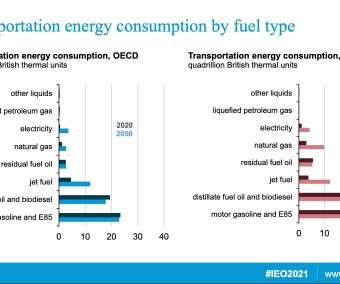EIA projects increases in global energy consumption and emissions through 2050
Green Car Congress
OCTOBER 7, 2021
The US Energy Information Administration (EIA) projects that, absent significant changes in policy or technology, world energy consumption will grow by nearly 50% between 2020 and 2050. Liquid fuels remain the largest source of energy consumption, driven largely by the industrial and transportation sectors.





















Let's personalize your content